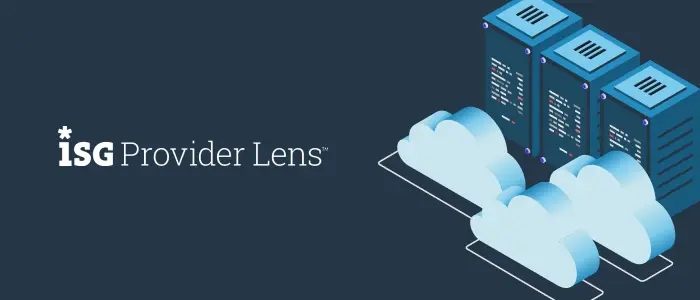
Cloud repatriation – anomaly, myth, or trending topic? It can be hard to tell. But with 80% of companies surveyed by CRN planning to repatriate part of their workloads in the next few months, evidence points towards something more enterprises are getting serious about.
In the beginning, public cloud computing was a shiny object that companies couldn’t wait to get their hands on. The idea of infrastructure and applications available on-demand with elastic scale attracted organizations in droves. Many early adopters raced to lift and shift entire application portfolios into the cloud but along the way learned hard lessons because they had not considered the long-term impact of those decisions.
As those companies have matured and grown, they’ve found negative externalities that come with a full public cloud approach. Cloud spending as a percentage of the total cost of revenue has reached shocking percentages for some companies.’
Earlier this year, Andreessen Horowitz (a16z) authored a provocative thought piece titled ‘The Cost of Cloud, a Trillion Dollar Paradox‘. In the article, they described a billion dollar software company whose public cloud spend amounted to approximately 81% of the cost of revenue (COR), and that cloud spend ranging from 75-80% of COR is considered normal.
As the pressure and cost of public cloud grows, companies find that issues can start to outweigh the benefits of public cloud for certain workloads. These issues with public clouds are why several major businesses are taking part in cloud repatriation.
Though the 80% cloud repatriation statistic points towards a massive shift, this is not as dramatic as it seems. The reality is that companies repatriate only some of their workloads from the public cloud, meaning a hybrid cloud reality is here to stay. This, in turn, is driving the need for unified orchestration platforms like Morpheus Data.
Cloud repatriation is the process of moving workloads or information that exists in the public cloud to an on-premises or hosted infrastructure that is controlled by the individual organization.
For example, a company could decide to move their virtual machines from a service like Microsoft Azure or AWS back to their on-premise data center running on a hypervisor like VMware or Nutanix, which may or may not include full private cloud self-service.
In these hybrid environments, it is important to give developers working with on-premises workloads the same on-demand experience they have become accustomed to in the public cloud. Morpheus Data provides consistent self-service provisioning of VM and Container-based services across both on-prem infrastructure and public clouds.
Often, as a company transitions from on-premises infrastructure to the cloud, they fail to understand the transition process. The public cloud is convenient. However, it is not perfect. Specifically, the public cloud may not be ideal for storing every workload or application within a given company. When businesses move to the public cloud, they often move everything to the public cloud and fail to realize that some applications and workloads are best-kept on-prem.
Though a public cloud can initially seem cheaper than building and managing on-prem data centers, public clouds can be considerably more expensive. In practice, cloud costs come with additional expenses that are not apparent when signing up for public cloud infrastructure. Also, larger enterprises can get economies of scale when they are in charge of their private infrastructure, so many are normalizing into a ‘own the base, rent the spike’ approach.
Further, cloud workloads require a specific skill set to manage and build. Companies that choose cloud repatriation need to have the right employees to manage the move as well as the on-going care and feeding. Unified orchestration platforms like Morpheus can reduce this burden by removing the need for teams to have deep expertise in multiple clouds.
However, even with the additional demands that on-prem can bring, many companies still experience around 50% in savings from cloud repatriation. Businesses can even save this much without moving all workloads off of the cloud. In fact, even the most aggressive companies in cloud repatriation still keep about 10 to 30% of their workload in the cloud, and they still experience these savings.
Cloud Repatriation Isn’t A Retreat
Refrain from looking at cloud repatriation as completely retreating to on-premise or escaping from the public cloud altogether. The public cloud has many benefits, but it is not perfect for all workloads. When considering and moving forward with repatriation, look at performance and cost. Repatriation should be a strategic move that will improve workloads or minimize the overall cost.
Analyze The Ripple-Effect
The ripple effect of cloud repatriation may be more than it’s worth to move workloads off the public cloud, but it all depends on your company’s bandwidth. Having both on-premise and public cloud can make your architecture more complex and require more management. However, if repatriation still makes sense for your company and you can manage it, cloud repatriation can be beneficial.
Determine Your Long-Term Strategy
Before moving back to on-premise, consider any long-term benefits that may arise by keeping your workloads in the public cloud. The public cloud historically has become cheaper and more functional over time. Staying with the public cloud is not always the best long-term strategy, but consider the benefits before moving back to on-premise.
Having a hybrid (multi) cloud management platform allows you the agility, flexibility, and control that you seek in managing both on-prem and public cloud infrastructures simultaneously. Request a demo with Morpheus Data, a Gartner Leader in hybrid cloud management, to see how we can help you manage repatriating part of your workloads without giving up the cloud agility you were looking for in the first place.